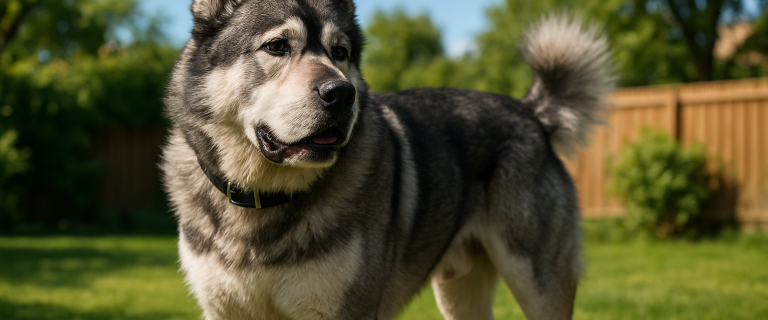The Dorgi dog breed, made famous by Queen Elizabeth II, is quickly becoming a popular mixed breed of choice among newbie dog owners. One look at them and it’s easy to see why!
There’s no denying that they’re absolutely adorable, but are they the right dog for your family? That’s exactly what I’ll help you figure out with this guide!
Below, we’re discussing everything you need to know about the Dachshund/Corgi mix. It’ll help you decide whether getting one is a good move for your family and household! Let’s dive in!

Complete Guide to the Dorgi Dog Breed
So before diving into the history, let’s look at what makes up this breed. Basically, they’re a mixed breed derived from crossing a Welsh Corgi with a Dachshund.
You can imagine how cute and precious the results are from this ingenious combination. I mean, everyone loves Corgis AND Dachshunds, right?
So it makes complete sense why these cuties have seen a recent trend in popularity. But now, it’s time to look at where these cute mixed-breed dogs come from and some other exciting tidbits.
Dorgi History and Origin
Dorgis have one of the more interesting origin stories among dog breeds. Their illustrious heritage started when Queen Elizabeth II mated one of her Corgis with a Dachshund (Pipkin) owned by Princess Margaret.
Now, here’s where the story gets a little vague. Some say it was intentional. Others say it was more of the type of “whoops” moment after Pipkin and the Queen’s Corgi managed to get a few unsupervised moments alone together.
Either way, Queen Elizabeth was a noted fan of the breed. As a result, Dorgis became a widespread choice among people looking to get a new dog. They’re now seen as a designer dog breed, often going for high prices.
Check out the video below for a look at the Queen with her beloved dogs:
Before we move on to their appearance and other characteristics, I also thought it’d be interesting to look at their parent breed’s origins. It’ll give you a clearer picture of where their heritage started:
- Corgis, specifically Welsh Corgis, are believed to have been in Wales for over 3,000 years. It has made them a staple in the UK and a favorite in regal circles. Queen Elizabeth owned more than 30 of them over the years, starting with Susan, a Corgi gifted to her when she was still a princess.
- Dachshunds are a much younger breed, only going back to the 1500s when they were first bred in Germany. When the AKC admitted them into their “Stud Book” back in 1885, their popularity in the US skyrocketed.
Dorgi’s Appearance and Physical Characteristics
It isn’t easy to offer a streamlined answer for a Dorgi’s appearance or physical characteristics. After all, they have several appearance combinations.
But I can offer a few generalized traits of these funny, sweet dogs:
- Weight: anywhere between 15-28 pounds
- Height: ranges fluctuate between 9-12 inches
- Body Type: sausage figure with usually Corgi-like ears. Some Dorgis will have floppy ears, but it’s a bit rare.
- Coat Type: short/medium-length fur coat with a wiry/coarse texture.
- Colors: mix of several colors, often including white, black, red, and brown
As is the case with all mixed-breed dogs (including fancy and expensive designer breeds), there’s really no way to predict- let alone guarantee- their offspring’s appearance.
You can see one example of Dorgi puppies in the video below. Just a quick note, though, we’re not endorsing this breeder by sharing this video, as we don’t personally know them.
Dorgi Temperament
Dorgis have lovely personalities, making them perfect household pets. I’ve encountered this breed numerous times and always had a positive experience. They don’t even get scared when my massive Pitbull waddles over to them.
As a result, I wasn’t surprised to learn they’re known for being friendly towards animals and humans. It seems like most Dorgis want to be part of a pack. They want a sense of camaraderie and enjoy hanging around others.
Another notable thing about this breed is that they’re totally attention hogs. Dorgis don’t enjoy it when someone isn’t paying attention to them, which can cause issues. It’s why some won’t do well when left alone, which causes problematic behaviors.
Lastly, some of you are wondering how Dorgis are around kids. It’s another area where these dogs do better than most other small breeds, including Dachshunds. But they require supervision because these dogs can get snappy if they’re startled or grabbed too hard.
Check out this adorable video of a Yodeling Dorgi for a closer look at what to expect temperament-wise:
Are Dorgis Easy to Train?
Dorgis have a reputation for being extremely smart dogs. But in some breeds, intelligence can be a bit of a double-edged sword, where it comes with a side of stubbornness. It can then lead to some difficulties taking place during training.
However, they aren’t known for being overly stubborn. So training is often relatively easy, considering they’re social and obedient. But the crucial element is ingraining positive behaviors and commands during their puppy stage. The puppy stage is vital in any breed for crafting good behavior.
One common issue with them is separation anxiety. In other words, some Dorgis grow deep attachments to their owners. So anyone who sees signs of separation anxiety will need to do some practice in getting comfortable when left by themselves.
Common Health Issues For Dorgis
Given their mixed breed status, Dorgis can inherit common health issues from Corgis and Dachshunds. So I’d recommend being familiar with their respective breed profiles. It can go a long way in preparing yourself for owning one.
But overall, they’re considered a healthy dog breed. A Dorgi will usually live anywhere between 12 to 15 years. So their parents’ issues don’t often cause them many problems.
Instead, the primary health concern is obesity, as these dogs adore eating food. So owners must be overly cautious about their diets and feeding routine. Otherwise, your dog may end up being hampered by all the problems associated with obesity. It’s also a good idea to talk with your vet about proper diet and exercise for these dogs.
Other common health problems are cataracts, vertebral disc disease, hip dysplasia, and cancer. Therefore, owners should familiarize themselves with these conditions’ various symptoms and signs. It’s an easy way to address them before the situation becomes a severe issue.
Exercise and Care Requirements For Dorgis
Potential owners often make the mistake of thinking these small dogs don’t need much physical stimulation. But it’s not the case with Dorgis. These canines require a significant amount of daily exercise (about an hour).
Most Dorgis prefer fetching toys over interactive ones. It seems to tap into their hunting instincts, so I recommend making time to play fetch daily. These dogs will also greatly benefit from a safe, enclosed yard as they love playing outside.
As for their care requirements, some Dorgis will need their coats stripped. It won’t be a frequent need, but those with coarse or wiry coats may require it occasionally. Again, let a professional do it rather than using a stripping comb at home.
Other care needs include regular brushing, nail trimming, and teeth checks. You’ll also want weekly ear cleanings using a cotton ball to prevent any issues.
Dorgis FAQs
How much does a Dorgi cost?
Dorgis from a reputable breeder with cost anywhere from $300 and $500. However, I’d suggest contacting rescues and shelters to see if they have any first. You’d be surprised by how many end up in these organizations.
Do Dorgi Dogs Shed?
Dorgis are considered minimal shedders when compared with other breeds. It’s why these dogs are often the choice of people with allergies.
Conclusion
Overall, Dorgis are an excellent addition to most households. These small bundles of fun will brighten any home with their beautiful personalities. But it’s essential to ensure an owner has time for them before bringing them into their lives. After all, Dorgis thrive on being the center of their owner’s attention.
Let us know if you have more questions about Dorgis in our comment section. I’d also love to hear from any Dorgi owners and their experiences with them. Thanks for reading!
Author
-

My name is Ben Roberts, and I’ve been writing about animals for many years. Honestly, I couldn’t ask for a much better job, considering I’ve been around animals all my life. I can’t remember a time when there wasn’t at least one cat or dog inside my home. Currently, I’m a proud owner of a Beagle and a Pitbull who make sure my life is never dull.
View all posts


